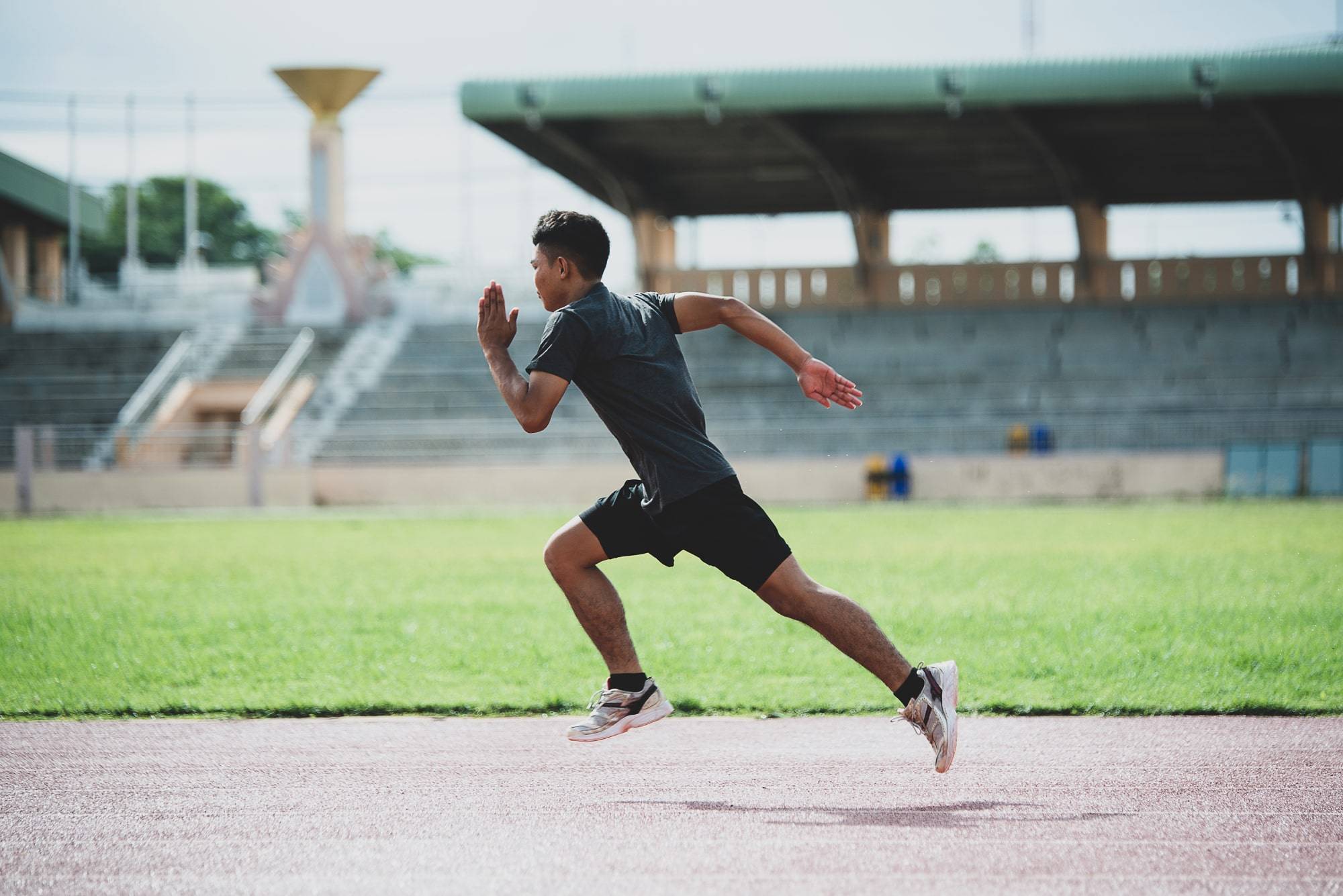Who among us wouldn’t like running just as fast as we can? But in reality, there are moments when it becomes unbearably difficult for us to breathe and move our legs. So how to get faster? In this blog post, we will look at the main causes that stop you from running faster and how to overcome them.
Reason #1: Lack of Oxygen
“I can’t catch my breath”
When it occurs: in the first kilometers of the race
What to do: warm up before the start, and do a few accelerations
Athletes sometimes complain of oxygen debt, which is why the first set is always the hardest in interval workouts. You do not have enough air, and your heart jumps out of your chest. But by the second series, it becomes easier, and in the third, you are just flying. Dr. Andrew Jones, a physiologist at the University of Exeter, is quick to explain why this is happening.
“When you start running, your muscles need for oxygen increases dramatically. The brain sends signals to speed up the work of the lungs and heart, expand blood vessels and increase the production of enzymes that are responsible for the absorption of oxygen. Your agony in the first series is the result of a timing mismatch between the amount of oxygen your legs need and the amount of oxygen your lungs and heart can provide.”
Temporary lack of oxygen has delayed consequences that can significantly hamper your performance. When muscles lack oxygen, they begin to draw energy from valuable anaerobic (oxygen-free) reserves. During this time, metabolic by-products are produced, due to which the muscles weaken, and you have less strength for the final anaerobic sprint.
“The energy you burn in the first few minutes of a run can never be recovered over the course unless you stop and rest for a while,” says Dr. Jones.
To avoid oxygen deficiency in the first miles, Dr. Jones and other experts advise properly warming up before the start.
Run for 10-20 minutes slowly, then get faster. Such a warm-up activates the production of enzymes in the muscles and expands the blood vessels. In addition, you will have time to rest and restore energy reserves.
Reason #2: Inefficient Recruitment of Muscle Fibers
“I try my best, but I’m still running too slow”
When it occurs: 10K or half marathon
What to do: train fast muscle fibers to increase their efficiency
The first miles of a half marathon usually feel easy. You don’t run too fast, so you don’t accumulate a lot of lactate and other metabolites in the body and don’t deplete your energy reserves. Then why does everything get so complicated at some point?
At the beginning of the race, our body uses only slow-twitch muscle fibers. They are ideal for long runs as they are more energy efficient and have more endurance.
But at some point, they begin to receive less fuel and gradually weaken. They are replaced by fast muscle fibers that need more energy and oxygen to maintain the same pace. Therefore, with each new kilometer of a half marathon, it becomes more and more difficult for your body to run at an even pace.
The good news is that fast-twitch muscles can be trained. A two or three-hour run, even at a meager pace, exhausts the slow-twitch muscle fibers and forces the fast muscles to practice generating energy. After several such workouts, fast muscles will have more mitochondria and capillaries, making them more enduring.
Reason #3: Metabolites Accumulate in the Muscles
“My feet are on fire”
When it occurs: Short distances up to 5k or a finishing sprint
What to do: short, interval work
For decades, scientists and athletes have debated the connection between lactic acid and the “feet burn” at the end of a run. But, despite its bad reputation, lactic acid, or rather lactate, is not to blame for anything.
Lactate is a type of metabolite, the chemical by-products that occur in muscles during intense work. Metabolites are formed when your body transitions from an aerobic system (an ultra-efficient energy provider) to an anaerobic, oxygen-free system.
University of Utah professors Alan Light and Markus Amann conducted an interesting experiment to find out how metabolites affect muscles. They gathered a group of ten volunteers and injected a cocktail of various metabolites into their thumbs. Among them were lactates, protons that contribute to muscle oxidation, and adenosine triphosphate, which is a type of cellular fuel.
The results are impressive. When scientists introduced all three substances together, participants in the experiment immediately reported feeling tired and heaviness in their thumbs. After receiving an increased dose of metabolites, the participants felt pain and burning, similar to feelings after a difficult workout.
The test shows that your muscles do not dissolve in lactic acid, although sometimes it seems that this is exactly what happens. In fact, the leg muscles interact with a certain combination of metabolites and trigger a signal that travels through the spinal cord to the brain and is interpreted as a burning feeling.
What to do with it? Train receptors to make them less receptive to metabolites. When you run really fast after a long break, it seems like you are dying. But each time, you get better because the receptors lose their hypersensitivity to metabolic products.
Reason #4: Accumulation of Metabolites Impedes Muscle Contraction
“I can hardly move my legs”
When it happens: At the end of difficult races
What to do: keep a moderate pace, don’t run too fast at the start
If you could somehow ignore the burning feeling in your legs, could your muscles work indefinitely?
To find the answer, Professor Amann and his colleagues recruited a group of volunteers, put them on bicycles, and injected some fentanyl into the spinal cord, which cuts off the signal between leg muscles and the brain. The participants were then asked to bike 5k as fast as possible.
The results were impressive. After the first rider ran his distance and tried to get off the bike, he practically fell to the floor. The rest of the participants also needed help getting off their bikes.
“They couldn’t take their foot off the pedal, let alone walk on their own,” says Professor Amann. The participants had a unique opportunity all athletes dream of – the ability to reach the limit of their capabilities without fatigue or pain. But they paid for it with muscles that actually stopped working.
Interestingly, after receiving a placebo injection, the participants did not go any faster than with fentanyl. “Both times, they felt great,” says Gregory Blaine, a colleague of Professor Amann. “They felt like they were flying. But we knew that it would not lead to anything good”. At half the distance, the cyclists felt good, but then their legs simply stopped responding to the commands sent by the brain.
In this case, fatigue really occurs in the muscles, not in the brain. Various metabolites – iron protons and phosphates – accumulate in the muscles and prevent the contact of muscle fibers. In other words, the fatigue you feel in your muscles is real, not imagined. If you run too fast at the beginning of a race, you will feel the effects of excessive metabolite buildup in your muscles towards the end.
Reason #5: Excessive Stress
“I give up”
When it happens: every time you reach your limits
What to do: train the brain
The pain is too much. This is how you usually explain not putting more effort into the last miles of the race. But this is not entirely true. It’s not because of the pain that you can’t run faster.
Physiologist Samuel Marcora thinks it’s all about the tension – your struggle against the growing urge to stop.
Marcora defines tension as your ability to keep your pace under the influence of various factors of fatigue – lack of oxygen, accumulation of metabolites, overheating, dehydration, muscle damage, depletion of energy reserves, and more. The moment of truth in any race usually coincides with the moment of maximum tension.
Runners spend most of their time training their muscles, heart, and lungs. But Marcora believes that by changing the subjective feeling of tension, you can run faster.
Researchers have already tried to influence this feeling using subliminal cues (showing a smiling face for a fraction of a second), electrical brain stimulation, motivational monologue (participants convincing themselves that they feel good), and brain endurance training (participants performing tasks on a computer at the same time as physical effort).
Scientists around the world have already learned a lot about the processes that occur in our bodies while running. Obviously, the next step towards more effective training will be the study of the brain.
.






